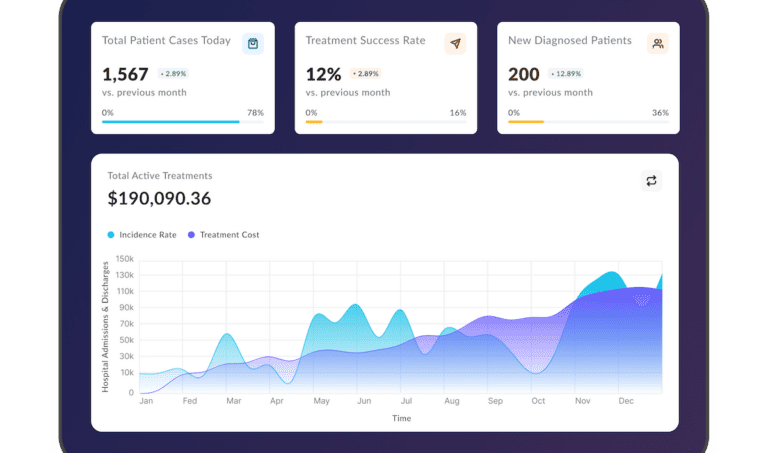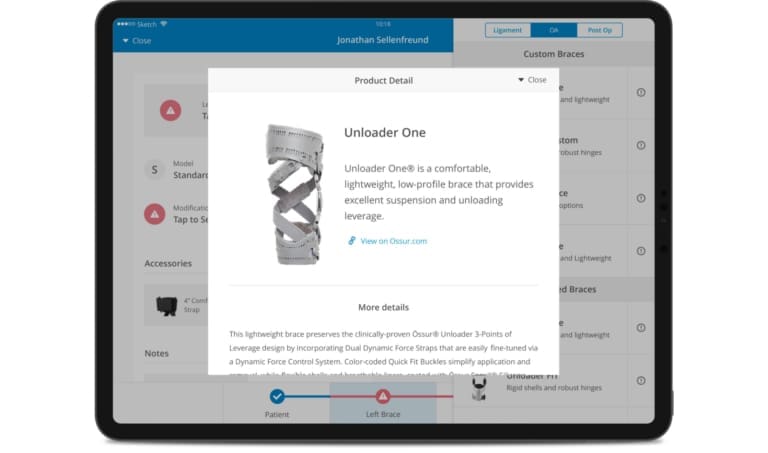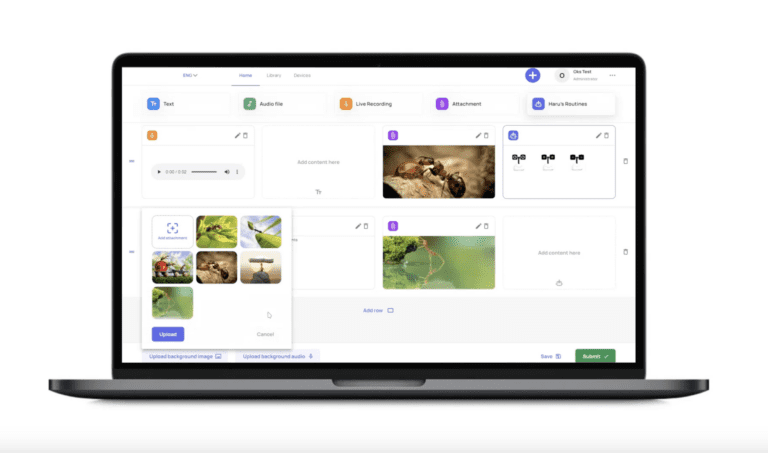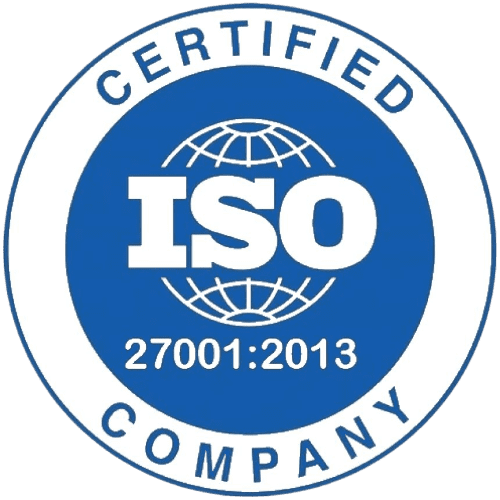Multi-Tenant Architecture for Designing a SaaS Application
Updated: June 4, 2025
Multitenancy, an essential aspect of modern application development, has gained prominence due to the growth of cloud computing and SaaS business models. SaaS delivers applications as a service over the Internet, while multitenancy enables resource sharing for faster and more efficient scaling. Multitenancy optimizes public cloud usage, consolidates resources, and makes cloud access affordable and consistent for all, benefiting both small businesses and larger corporations. New features introduced in a multi-tenant architecture benefit all users, whereas single-tenancy improvements only cater to one client.
So what is multi-tenancy, and why do businesses build their applications using a multi-tenant architecture? How to create an efficient multi-tenant database design for SaaS applications? If you searched for answers, you’ve landed in the right spot! We’ll cover them all and guide you in selecting the best SaaS architecture suitable for your enterprise. So, let’s get started!

We provide companies with senior tech talent and product development expertise to build world-class software. Let's talk about how we can help you.
Contact usTable of Contents
Multi-Tenant vs. Single-Tenant Architecture
Regarding SaaS, there are two main architectural approaches: multi-tenant and single-tenant. Deciding which one to use for your business can be tough, but keep going! Let’s look at both options and weigh the pros and cons.
- Multi-tenant architecture is like hitting two birds with one stone: it allows a single application instance to serve multiple customers while keeping their data isolated. It’s a cost-effective and scalable solution that is music to the ears of any business owner looking to save money and grow their customer base.
- On the other hand, single-tenant architecture is all about putting all your eggs in one basket. Each tenant gets a dedicated instance of an application, ensuring complete data isolation and control. This approach is like having a custom suit perfectly tailored to your business needs, but it can be more expensive and harder to scale.
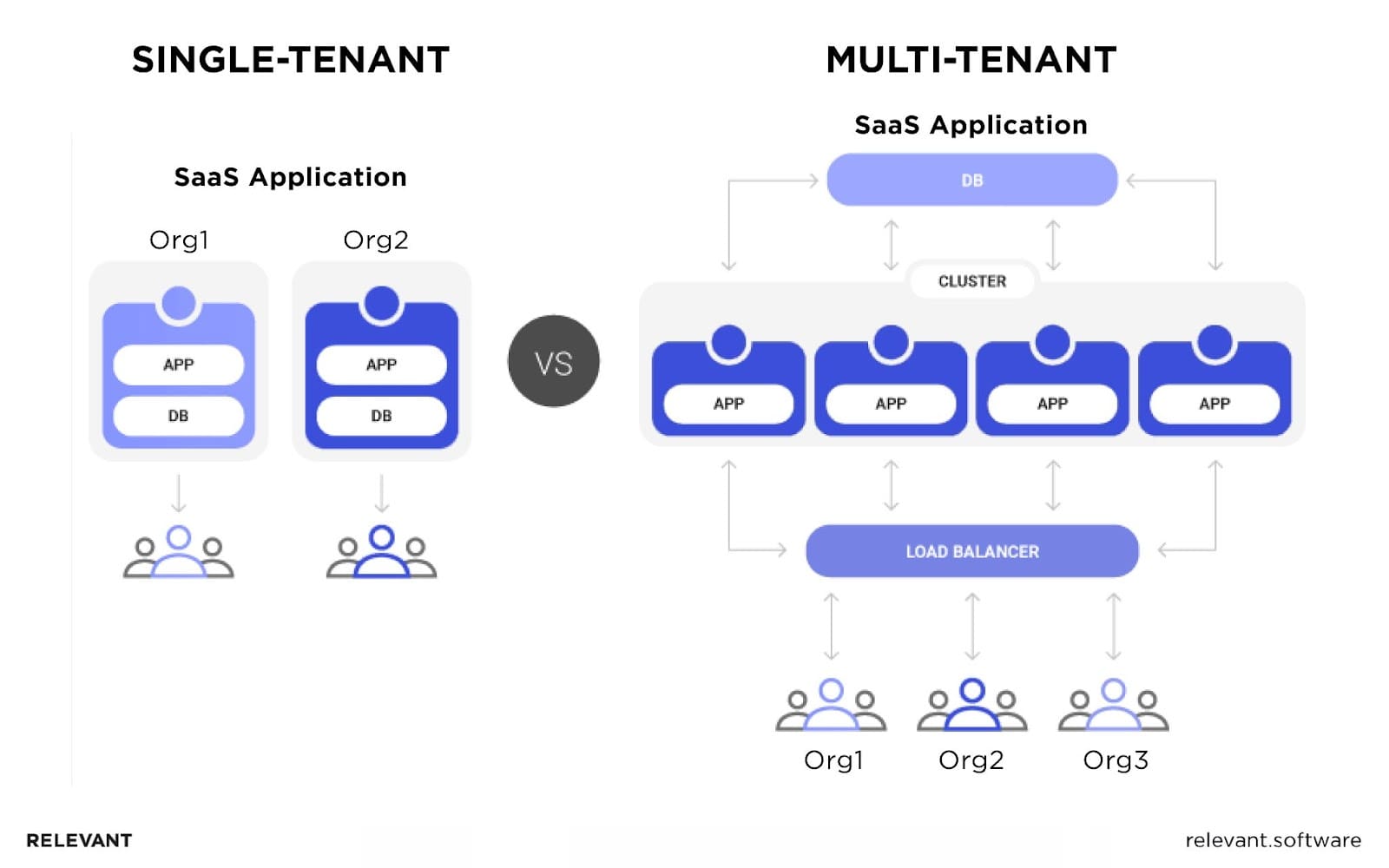
Comparison Table: Pros and Cons of Multi-Tenant vs. Single-Tenant Cloud Architecture
| Aspect | Multi-Tenant Architecture | Single-Tenant Architecture |
| Cost efficiency | Efficient resource sharing among tenants can reduce the overall cost | Higher cost due to dedicated resources for each tenant |
| Customization | Supports customization and feature enhancements that can be shared | High level of customization and control |
| Scalability | Enables seamless scaling of resources and infrastructure as tenants increase | Limited scalability based on dedicated resources for each tenant |
| Data security and privacy | Requires robust data isolation mechanisms to ensure data privacy and security | Offers complete data isolation and control for each tenant |
| Maintenance and upgrades | Updates and maintenance can be applied to all tenants simultaneously | Maintenance and upgrades must be applied to each tenant individually |
| Performance and stability | Shared resources and infrastructure can impact performance and stability | Dedicated resources can improve performance and stability |
While both architectural paradigms have advantages and disadvantages, multi-tenancy is the preferable option in most cases. When executed correctly, it allows for the development of a scalable and future-proof platform that optimizes resource usage and is easier to maintain in the long run.

What is Multi-Tenant Architecture Exactly?
Multi-tenant software architecture is popular for SaaS applications where multiple users (i.e., tenants) share the same infrastructure and resources. Each tenant has a different virtual environment with a dedicated software instance. That is achieved by partitioning the software’s data and configuration to ensure tenant privacy and data isolation.
One famous example of multi-tenant architecture is Salesforce – a SaaS provider that allows millions of clients to use the same software platform while ensuring data privacy and security. It’s like a big potluck where everyone brings their favorite dish – the approach enables tenants to customize the app to suit their specific business needs, providing the flexibility that is impossible with single-tenant architecture. Overall, Salesforce’s multi-tenant architecture is a highly efficient way to provide SaaS services to many clients.
Multi-Tenant SaaS Architecture Types
The tenancy model will profoundly influence the critical aspects of your SaaS. It is crucial to construct the service around your business requirements rather than arbitrary assumptions. Here are the multi-tenant models worth considering:
- Database-per-tenant: In this model, each tenant receives a dedicated database. The application tiers can scale either vertically (augmenting resources per node) or horizontally (increasing node quantity). Nevertheless, databases within the same resource groups can be partitioned into flexible pools. Vendors have the ability to shift tenant databases among these pools to streamline resource management.
- Single multi-tenant database: This multi-tenant database comprises an array of tenant identifier columns, while storage and computational resources are distributed among all users. As a result, per-tenant costs are reduced. On the flip side, a single tenant’s workload may affect the service’s performance for others.
- Sharded multi-tenant databases: Sharding facilitates the dispersal of tenant data across numerous databases. As workloads expand, heavily populated shards can be divided into multiple less congested nodes (or recombined just as seamlessly). Moreover, sharded databases can be integrated into elastic pools to further augment operational management and scalability to a greater extent.
- Hybrid-sharded multi-tenant databases: In this configuration, a tenant or whole groups can be transitioned between exclusive and shared databases. This strategy proves most effective when multiple distinguishable tenant groups possess differing resource requirements (such as complimentary trial tiers and premium subscribers).
Multi-tenant architecture use cases
Multi-tenancy is deemed an essential component of cloud computing, as cloud services would be less feasible without it. However, this architecture is not appropriate for every application.
- Software as a Service or Applications as a Service (SaaS and AaaS). Multi-tenancy empowers SaaS providers (Salesforce, Microsoft, Adobe, SAP) to administer and deliver services to distinct customers proficiently.
- Platform as a Service – PaaS. Multi-tenant architecture equips PaaS providers (Amazon Web Services, Microsoft Azure, Google Cloud) with the means to dispense their services to various clients while pooling resources and diminishing expenses.
- Infrastructure as a Service – IaaS. Multi-tenancy enables IaaS providers, like DigitalOcean or Google Compute Engine, to allocate resources effectively and proffer cost-efficient solutions to various clients.
- Other applications employ identical algorithmic sets. Multi-tenant architecture proves beneficial for applications wherein numerous clients exploit uniform or modular functionality or algorithms. It can be tailored to the requirements of each client, allocating resources and reducing costs at the same time.
Advantages of Multi-Tenant Architecture
As an entrepreneur or developer, you might be curious why multi-tenancy is the advocated architecture for your cloud application. Delving into the advantages of multi-tenant architecture unveils its merits:

- Cost-effectiveness: Multi-tenant architecture diminishes the cumulative software cost by apportioning infrastructure, resources, and application instances among numerous tenants. That reduces hardware, software licenses, and upkeep expenses, rendering SaaS applications accessible to businesses of all magnitudes.
- Scalability: Multi-tenant architecture facilitates the horizontal scaling of applications for SaaS providers, incorporating additional servers or resources as the tenant population expands. This sustains application performance even as the user base enlarges, guaranteeing a consistent experience for all tenants.
- Streamlined updates and maintenance: Within a multi-tenant environment, updates and patches necessitate a single application, benefitting all tenants concurrently. This enhances the maintenance process’s efficiency and expedites it for SaaS providers, minimizing downtime and ensuring customers can access the latest features and improvements.
- Resource optimization: Multi-tenant architecture empowers SaaS providers to optimize resources by pooling them and dynamically allocating them as required. This yields superior resource utilization, such as memory, storage, and processing power, ultimately augmenting the system’s overall efficiency.
- Customizability and flexibility: Despite tenants sharing the same application instance, the multi-tenant architecture permits tenant-specific customizations and configurations. Consequently, each tenant enjoys a tailored user experience catering to their unique needs without impacting others.
- Data security enhancement: SaaS providers can enforce strict data isolation and security protocols in multi-tenant environments, ensuring each tenant’s data remains private and secure. Furthermore, multi-tenant architecture simplifies compliance with data protection regulations, as providers can implement necessary controls and safeguards throughout the entire system.
- Expedited market launch: Employing a multi-tenant architecture, SaaS providers can swiftly develop and deploy novel features and services, as implementation occurs only once across the entire system. Customers can thus reap the benefits of innovative solutions earlier, gaining a competitive edge in the market.

Tenant Isolation
Tenant isolation represents a crucial notion within multi-tenant SaaS ecosystems. It refers to the methods employed to regulate resource access and ascertain that each tenant’s resources remain secluded, even when operating on shared infrastructure.
Tenant isolation diverges from general security mechanisms such as authentication and authorization. While these mechanisms furnish security, they do not inherently achieve isolation. Isolation is accomplished by examining the current tenant’s context and utilizing that context to establish which resources are accessible to the tenant. This can be realized through an array of tools and technologies, contingent on the application’s specific needs. Here are several tenant isolation models:
Silo Isolation
Silo isolation denotes the absolute separation of tenants’ data, application logic, and resources. Every tenant possesses its distinct database, infrastructure, and application instance. This furnishes maximum data isolation but may escalate maintenance and resource expenses.
Pool Isolation
In pool isolation, tenants are classified based on criteria such as organizational size or industry. Each group shares a discrete set of resources, application logic, and database. This strategy achieves an equilibrium between resource efficiency and data isolation.
Bridge Model
The bridge model encompasses resource and application logic sharing across tenants while retaining separate databases. It offers a heightened degree of data isolation compared to pool isolation but necessitates more resources.
Tier-Based Isolation
Tier-based isolation segregates tenants according to their subscription tiers or service levels. Tenants within an identical tier share resources, application logic, and databases, while disparate tiers experience varying isolation degrees.
Onboarding Process
Consider this: every subscription-based SaaS encounters churn (also known as customer attrition). Studies show that churn rates for cloud-based services vary between 16% and 37% across different sectors. But here’s the silver lining: you can diminish customer attrition by making your service more comprehensible to new tenants. This process, known as tenant onboarding, involves providing users with:
- Account creation and sign-up: Provide a straightforward sign-up process, guiding users through account creation and setup.
- Tenant-specific configuration: Allow users to configure settings and preferences specific to their organization during onboarding.
- Onboarding tutorial or walkthrough: Offer a guided tour or tutorial that highlights essential features and helps users get started quickly.
Tenant Configuration
Allowing tenants to configure their settings and preferences is vital for a tailored user experience in multi-tenant SaaS applications. Key considerations for tenant configuration include:
- Customization options: Offer tenants options to customize the application’s look and feel, such as branding, theme colors, and layout.
- Feature access and permissions: Allow tenants to manage user roles and permissions, enabling control over feature access and data visibility.
- Integration settings: Provide configuration options for integrating with external services or applications, streamlining data exchange and workflows.
Tenant Usage Analytics
Scrutinizing tenant usage analytics enables SaaS providers to refine resource distribution, pinpoint usage patterns, and enhance the overall application performance. Vital metrics to track encompass:
- Resource utilization: Supervise tenants’ CPU, memory, and storage consumption to optimize resource allocation.
- Feature usage: Monitor the adoption and employment of distinct features, identifying sought-after or underutilized features.
- Response times and performance: Assess each tenant’s application response times and performance, detecting bottlenecks or areas necessitating improvement.
Addressing these facets in your multi-tenant SaaS application guarantees an optimal user experience, efficient resource consumption, and robust tenant isolation, ultimately contributing to your application’s success.
Building a Multi-Tenant SaaS Application: Best Practices
Once you opt for a multi-tenant architecture for your SaaS application, it’s crucial to implement best practices to guarantee security, scalability, and efficiency. This section will cover some of the recommended practices for constructing a multi-tenant SaaS application.
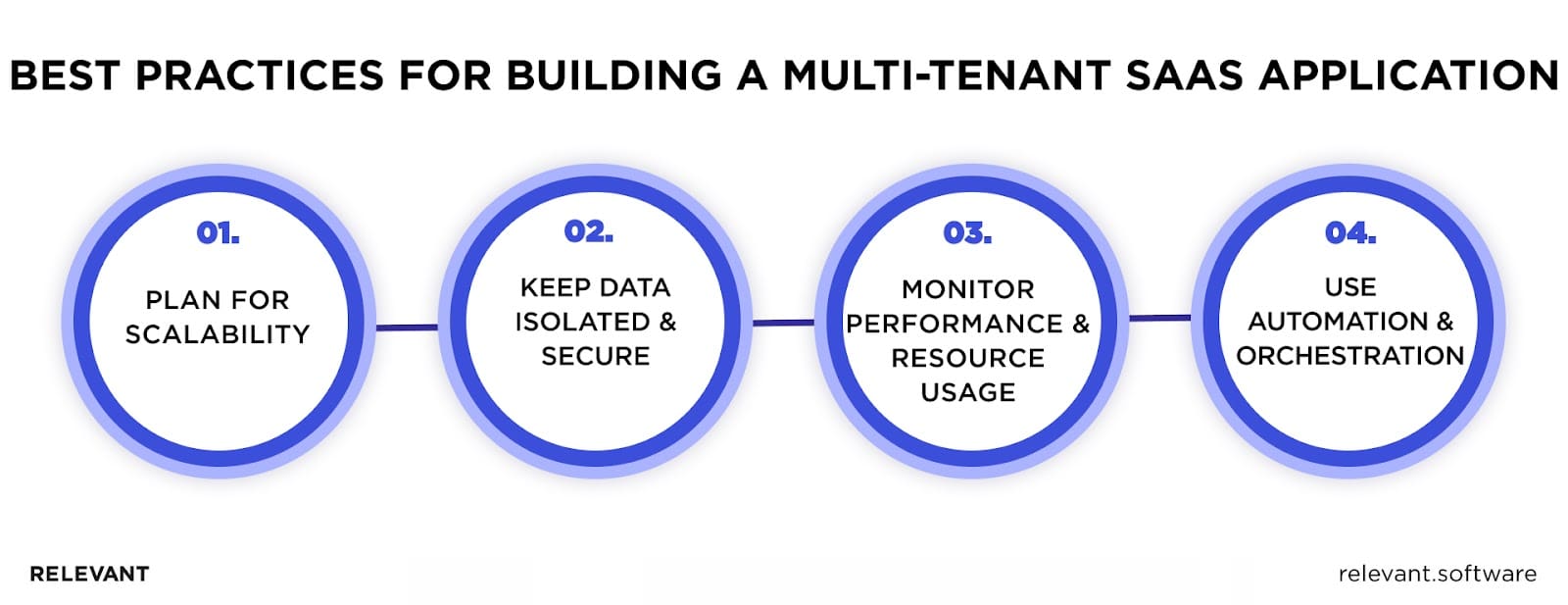
Plan for Scalability
Design your application with scalability in mind to accommodate the growing number of tenants and fluctuating workloads. Employ a modular approach, use microservices architecture, and auto-scaling features in cloud environments.
Keep Data Isolated & Secure
Ensure that each tenant’s data remains private and protected by implementing strict data isolation mechanisms, such as separate schemas, tenant-specific encryption, and access control. Regularly update and patch your application to minimize security vulnerabilities.
Monitor Performance and Resource Usage
Track key performance indicators (KPIs) and resource utilization to optimize resource allocation, detect performance bottlenecks, and address issues promptly. Utilize monitoring and analytics solutions to collect information and make informed choices to enhance performance
Use Automation & Orchestration
Leverage automation and orchestration tools to streamline deployment, management, and scaling processes. This will reduce manual intervention, improve efficiency, and ensure consistency across the application.
SLAs in a Multi-tenant Architecture
An SLA is a formal agreement outlining the service level that your SaaS application will provide its tenants. This agreement typically includes details such as uptime, security measures, data isolation mechanisms, software updates, and the consequences if service levels are unmet.
Here are some SLA strategies to consider:
- Define Clear Metrics: Establish clear, measurable, and achievable metrics for performance, availability, and support response times. Ensure that these metrics are transparent and easily understandable by your tenants.
- Differentiate Service Tiers: Offer multiple service tiers with varying SLAs based on factors like performance, uptime, and support, allowing tenants to choose the option that best suits their needs.
- Establish Reasonable Expectations: Ensure that your SLAs are reasonable and possible. Offering less and delivering more can result in higher tenant contentment and loyalty.
- Monitor and Report Compliance: Regularly monitor and report on SLA compliance to identify areas where improvements can be made, demonstrate commitment to quality service, and maintain trust with your tenants.
- Continuously Improve: Use SLA performance data to identify opportunities for improvement and optimize your multi-tenant SaaS application, ensuring that you meet or exceed the expectations set by your SLAs.
How to design a multi-tenant SaaS
Our company excels in building effective multi-tenant SaaS applications that emphasize resource sharing, customization, and scalability. Here is a step-by-step guide that we follow to design an efficient multi-tenant SaaS application:
Step 1. Establishing tenant isolation prerequisites: We initiate the process by identifying the necessary isolation level between tenants, encompassing data storage, application logic, and user interface layers. Comprehending the degree of isolation is crucial for developing a scalable and secure system tailored to the needs of various tenants.
Step 2. Opting for a database strategy: The choice of an appropriate strategy type depends on the nature of the application and the volume of its data. Smaller companies may benefit from shared databases initially, but a hybrid approach that allows scaling resources between user groups may be necessary as the user base grows.
Step 3. Implementing tenant identification: We design a mechanism to identify tenants throughout the system, such as a unique tenant ID. This identifier should be used consistently in data storage, application logic, and user interface layers to maintain tenant-specific customizations and data isolation.
Step 4. Designing scalable application components: We build your application components, such as microservices or modules, with scalability in mind. This ensures that as the number of tenants grows, the application can maintain consistent performance by efficiently distributing resources across tenants.
Step 5. Configuring tenant-specific settings: We provide tenant-specific customizations by creating a configuration module or service that stores and manages settings for each tenant. This enables tenants to have tailored experiences without affecting other tenants.
Step 6. Securing data and access control: We implement robust security measures to protect tenants’ data and control resource access. It includes tenant-specific encryption, authentication, and authorization mechanisms to ensure data privacy and compliance with regulations.
Step 7. Planning for monitoring and management: We design your multi-tenant application with monitoring and management tools in place. This enables the efficient detection and resolution of performance or security issues, ensuring a consistent and reliable experience for all tenants.
Step 8. Optimizing resource utilization: To proficiently administer resources such as CPU, memory, and storage, we put into practice tactics like auto-scaling, load balancing, and caching. This approach aids in optimizing resource usage and decreasing expenses while upholding application performance.
Step 9. Testing and validating: We thoroughly test your multi-tenant application under various scenarios, such as concurrent access, tenant-specific customizations, and resource contention, to identify and address potential issues before deployment.
By following these steps, we design a scalable, secure, and customizable multi-tenant SaaS application that meets the diverse needs of our tenants while optimizing resource utilization and cost efficiency.
Final Thoughts
The global multi-tenant data center market is expected to experience significant growth over the next few years. ResearchAndMarkets.com predicts that the market will achieve a value of $48.4 billion by 2027, with a Compound Annual Growth Rate (CAGR) of 7.49%. Thus, businesses need to keep up with this growing trend.
If you’re considering implementing SaaS multi-tenant architecture or building a product from scratch, Relevant’s reliable services can be the solution you need. We have a proven track record of transforming businesses with our software development solutions for many years. We leverage the latest technologies and trends and have a team of talented and experienced developers and consultants to ensure the timely delivery of your SaaS project. We can also assist you in building a secure and scalable multi-tenant infrastructure, optimizing performance while reducing expenses and simplifying maintenance.
Recently, we developed a SaaS platform for the UK fintech company FirstHomeCoach. In its first year, FirstHomeCoach processed over 40,000 data points, helping more than 5,000 users plan property purchases, and over 1,000 people used its mobile application. So, if you’re determined to succeed like other of our respected clients, contact us today.
FAQ
Our core services:
Do you want a price estimate for your project?
Do you know that we helped 200+ companies build web/mobile apps and scale dev teams?
Let's talk about your engineering needs.
Write to us